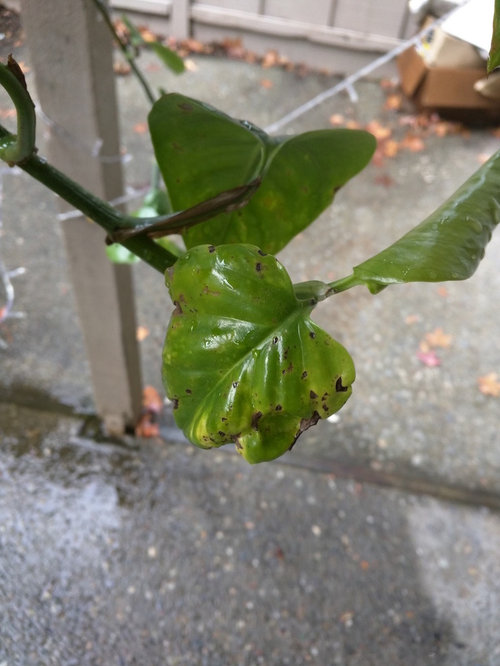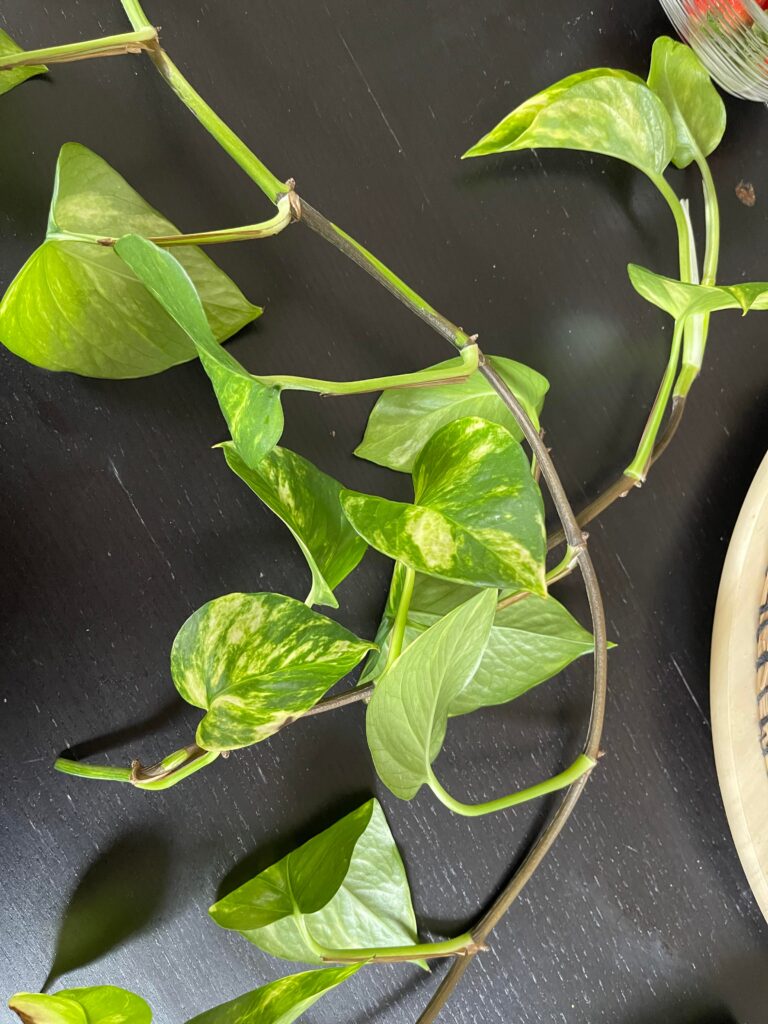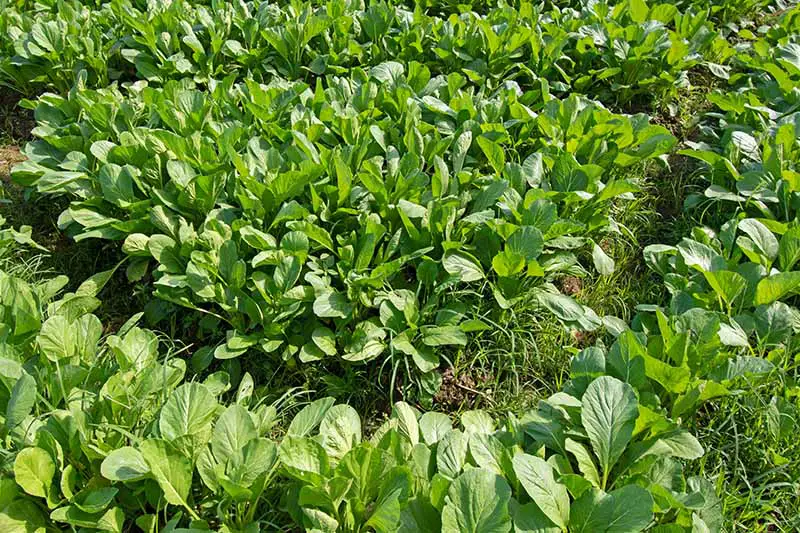The stem of a money plant might turn black in water due to lack of oxygen. This occurs when the plant is kept in stagnant water for too long.
Money plants, also known as devil’s ivy, are popular houseplants for their ease of growth and low maintenance. They can be grown in soil or water, making them a favourite among homeowners. However, when grown in water, the plant can turn black due to a lack of oxygen.
When the roots are exposed to stagnant water, they cannot take in enough oxygen, resulting in the stem turning black. This can also lead to the plant wilting and dying. To avoid this, ensure that the plant has a well-thought-out rooting system and is periodically exposed to fresh air to promote growth.

Credit: www.houzz.com
Understanding The Causes
Money plant is one of the easiest plants to grow, but sometimes it turns problematic when the stem starts turning black in water. If you are a plant lover, you would want to know the causes of this issue to help your plants thrive.
In this section, we will discuss the most common causes of blackening stem in money plants when grown in water.
Poor Water Quality
Poor water quality can have dire effects on the growth of money plants, which can lead to problems such as blackening stems. Here are some of the key points to note:
- Money plants thrive in water with a balanced ph level of 6.0-7.5. Water with a ph level outside this range can cause stress to your plant.
- Excessive amounts of chlorine, fluoride, or minerals present in the water can also affect the health of your money plant.
- Too much salt in the water can cause the roots to absorb excess salts, leading to the darkening of the stem.
Overwatering
Many plant enthusiasts often tend to overwater their plants, thinking that more water will help the plants grow faster. Unfortunately, overwatering can lead to the rotting of the roots and eventual death of your money plant. Here are some important points to note:
- Overwatering can cause the soil to be waterlogged, making it hard for the roots to absorb nutrients, leading to the blackening of the stem.
- Watering your plant too frequently can deprive the roots of oxygen, leading to root rot and stem browning.
- The soil of your money plant should be moist but not waterlogged. You can check this by sticking your finger 1 inch into the soil; if it feels dry, it’s time to water your plant.
Lack Of Oxygen
The lack of oxygen in water can also lead to the browning of the stem of money plants. Here are some important points to note:
- Roots of money plants need oxygen to absorb nutrients and grow healthily. Lack of oxygen can lead to root rot and discoloration of the stem.
- Stagnant water can lead to an oxygen deficit, which can be harmful to the growth of money plants.
- The best way to ensure enough oxygen for your plant is to change the water frequently, at least once a week.
Maintaining the health of your money plant requires regular monitoring of water quality, appropriate watering, and supplying oxygen to your plant. By adhering to these guidelines, you can steer clear of blackened stems and other issues that might endanger your plant’s life.
So, keep a close eye on your plant and provide it with the love and care it deserves.
Identifying The Symptoms
Money plants are popular indoor plants that have a reputation for being unfussy and easy to care for. However, many novice gardeners struggle with one particular problem – a blackening of the stem. While money plants are generally easy to care for, they can present a challenge once their stems start turning black.
Here are the key signs to look out for:
Blackening Of The Stem
- The stem of the money plant starts turning black in water.
- The blackening of the stem usually starts at the bottom and progresses upwards.
- The black part of the stem is usually soft and mushy to the touch.
- The blackening of the stem can be caused by overwatering or underwatering, which leads to root rot.
Wilting Of Leaves
- The leaves of the money plant start drooping and wilting.
- The leaves get discolored and turn yellow or brown.
- The wilting of leaves can be caused by lack of water or overwatering.
Yellowing Of Leaves
- The leaves of the money plant turn yellow and fall off.
- The yellowing of leaves can be caused by overfertilizing, lack of nutrients, or insect infestation.
- Yellowing of leaves is not always a symptom of stem turning black, but it can be an indication of plant stress.
Identifying the symptoms of a money plant with a black stem is crucial to saving the plant. Look out for blackening of the stem, wilting of leaves, and yellowing of leaves. Once the symptoms are identified, corrective measures can be taken to prevent further damage.
Prevention And Treatment
Money plants are a popular household plant known for their low maintenance and air-purifying qualities. However, a common issue that many plant owners face is a blackened stem in water. This can be frustrating and worrying for those who want their money plants to thrive.
In this blog post, we will discuss prevention and treatment methods for a blackened stem in water.
Choosing The Right Type Of Water
Choosing the right type of water for your money plant is important in preventing a blackened stem. Tap water contains chlorine and other chemicals that can harm the plant. It is recommended to use filtered or distilled water when watering your money plant.
Maintaining Proper Watering Practices
Watering your money plant properly is essential in preventing a blackened stem. Overwatering or underwatering can lead to stress and eventually cause the stem to turn black. Here are some tips to maintain proper watering practices:
- Water your money plant when the top inch of soil is dry to the touch.
- Do not let the plant sit in water for an extended period of time.
- Ensure proper drainage in the pot to prevent waterlogging.
Providing Proper Aeration
Proper aeration is necessary for the health of your money plant and to prevent a blackened stem. Oxygen is essential for root growth, and stagnant water can lead to root rot, which can ultimately cause the stem to turn black.
Here are some ways to provide proper aeration:
- Use a pot with drainage holes.
- Use a well-draining soil mix to promote airflow to the roots.
- Avoid overcrowding the pot.
Treating A Blackened Stem
If you have noticed your money plant’s stem has turned black, take immediate action to save the plant. Here’s what you can do:
- Cut the blackened stem above the affected area using sterilized shears.
- Change the water and use distilled or filtered water.
- Add a small amount of activated charcoal to the water.
- Propagate the plant by taking a healthy cutting and planting it in fresh soil.
Preventing a blackened stem in water for your money plant requires choosing the right type of water, maintaining proper watering practices, and providing proper aeration. If you have already noticed a blackened stem, taking immediate action can save your plant from further damage.
Remember to take good care of your money plant by providing it with the proper environment to thrive.
Frequently Asked Questions Of Money Plant Stem Turning Black In Water
Why Is The Stem Of My Money Plant Turning Black In Water?
The black stem may indicate root rot or bacterial infection. Overwatering or using contaminated water can damage the roots and cause the stem to turn black. Move the plant to a well-draining soil mix and check the water quality.
Can I Save My Money Plant If Its Stem Has Turned Black In Water?
Yes, you can save your money plant. Remove the plant from the water and cut off the affected parts. Repot the plant in a well-draining soil mix and avoid overwatering. Apply a suitable fungicide to prevent fungal or bacterial infections.
Can Using Tap Water Be The Reason Behind The Blackening Of My Money Plant Stem?
Using tap water with high levels of chlorine, fluoride, or salts can damage the roots and cause the stem to turn black. Allow the tap water to sit overnight before using it, or use filtered or distilled water for your money plant.
How Often Should I Water My Money Plant To Avoid Blackening Of The Stem?
Water your money plant once every seven to ten days, allowing the soil to dry out between waterings. Overwatering can lead to root rot and blackening of the stem. Use a well-draining soil mix that helps prevent waterlogging.
Can Direct Sunlight Cause The Stem Of My Money Plant To Turn Black?
No, direct sunlight is not the reason for the blackening of your money plant stem. Money plants prefer indirect light and can be placed near a window covered with a sheer curtain. The blackening may be due to overwatering or using contaminated water.
Conclusion
A money plant is a versatile and low maintenance houseplant that can be grown in water or soil. While it is natural for the older leaves to turn yellow and drop, blackening of the stem is a cause for concern.
Too much sunlight, colder temperatures or waterlogged soil are some of the common culprits for stem turning black in water. If you observe any such symptoms, you must take immediate action to save your money plant. Start by changing the water, trimming the affected portion, and ensuring adequate sunlight without exposing the plant to harsh rays.
In most cases, your money plant will recover with appropriate care and maintenance. By following these simple guidelines, you can continue enjoying the beauty and benefits of this popular indoor plant that is known for its air purifying qualities and positive energy.




